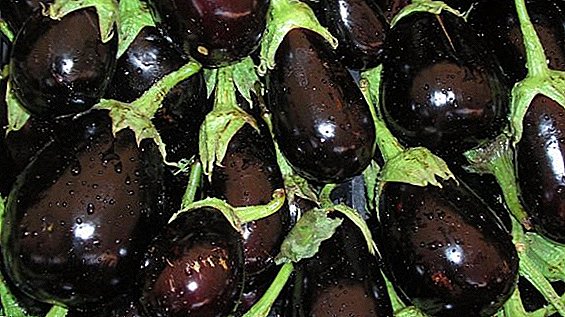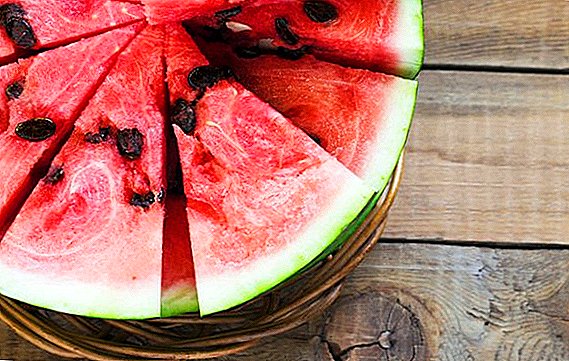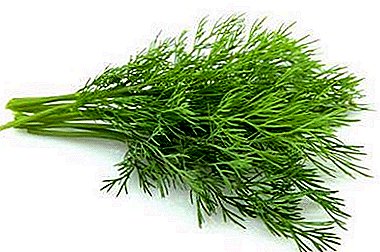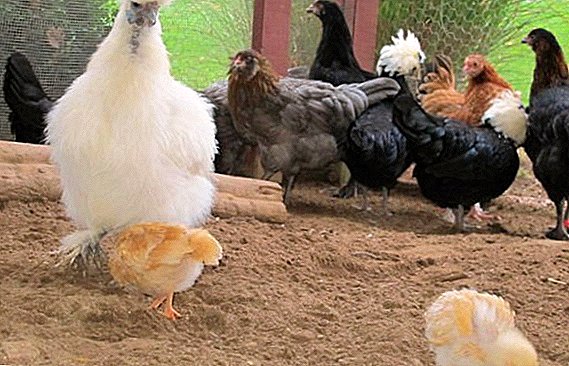 Sooner or later, before the poultry farmer there is a question about updating the livestock or the establishment of new breeds. And then a person wonders how to do this and whether it is possible to keep chickens of different age categories in the same room and merge on the same range. We offer to understand the question.
Sooner or later, before the poultry farmer there is a question about updating the livestock or the establishment of new breeds. And then a person wonders how to do this and whether it is possible to keep chickens of different age categories in the same room and merge on the same range. We offer to understand the question.
The content of chickens of different ages in one herd
When breeding chickens with the help of an incubator, a poultry farmer often has a problem of keeping children of different ages. Let's consider in what cases the joint content is possible and in which not.
Did you know? Chicken set a world record for the construction of the largest nest. Australian Oculus Chicken built an incubation hill with a height of 4.57 m and a width of 10.6 m. 250 cubic meters were spent on its construction. m building material weighing 300 tons
Whether or not
You can keep chickens of different ages, however with only a slight difference in age, since they must differ in the diet, the amount and composition of the required feed, as well as the recommended temperature of the content.  For example, day-old chicks are fed corn grits.
For example, day-old chicks are fed corn grits.
In the next two days add:
- millet, barley - 5 g per 1 individual;
- boiled egg - 2 g;
- skim milk - 5 g;
- greens or carrots - 1 g.
Learn how to feed the chickens in the first days of life.
For 4-10 day old chicks, the approximate menu is as follows:
- 2 g boiled eggs;
- 8 g of skim milk;
- 1.5 g of cottage cheese without fat;
- 9 g of grain (corn, millet, barley);
- 0.2 g of cake and meal;
- 2 g of greens and carrots;
- 0.4 g of mineral feed.
At this time, babies are fed every 2 hours. Then the number of feedings is gradually reduced to 4-5 times.
As you can see, the diet is significantly different, so these age categories are best kept separately.  Subsequently, from the 11th to the 40th day, nutritional recommendations contain the same ingredients, but somewhat different norms. Therefore, chickens of these ages can try to combine together.
Subsequently, from the 11th to the 40th day, nutritional recommendations contain the same ingredients, but somewhat different norms. Therefore, chickens of these ages can try to combine together.
| Feed composition | Chick Age (days) | ||||
| 11-20 | 21-30 | 31-40 | 41-50 | 51-60 | |
| Milk shot | 15 g | 20 g | 35 g | 25 g | 25 g |
| Low fat cottage cheese | 2 g | 3 g | 4 g | 4 g | 5 g |
| Corn (corn, barley, millet) | 13 g | 22 g | 32 g | 39 g | 48 g |
| Fish or meat and bone meal | 1 g | 1.4 g | 2.8 g | 3.5 g | 4 g |
| Cake, meal | 0.5 g | 0.6 g | 1.2 g | 1.5 g | 2 g |
| Greens or carrots | 7 g | 10 g | 13 g | 15 g | 18 g |
| Boiled potatoes, root vegetables | 4 g | 10 g | 20 g | 30 g | 40 g |
| Mineral feed | 0.7 g | 1 g | 2 g | 2 g | 2 g |
| Salt | - | - | - | 0.1 g | 0.2 g |
It is also possible to combine chickens of 1.5 and 2 months. Their diet is quite similar.  In this way, combining chickens in the same room is possible only with a comfortable difference of 20-25 days. It is better to move the older ones to the younger ones or to start them at the same time into new territory.
In this way, combining chickens in the same room is possible only with a comfortable difference of 20-25 days. It is better to move the older ones to the younger ones or to start them at the same time into new territory.
Important! If the chicks come from another farm, they must be quarantined for 30 days.
Other recommendations for the preparation of the diet for broilers, so they should be necessarily separated from the egg babies.
| Feed composition | Chick Age (days) | ||
| 1-4 | 5-30 | 31-63 | |
| Barley | - | 10 g | 16 g |
| Wheat | 40 g | 26 g | 35 g |
| Corn | 40 g | 30 g | 20 g |
| Soybean Meal | 10 | - | - |
| Sunflower cake | - | 16 g | 13 g |
| Herbal flour | - | 2 g | 2 g |
| Fish flour | - | 6 g | 3 g |
| Meat and bone meal | - | 4 g | 3 g |
| Powdered milk | 10 g | 2 g | - |
| Yeast | - | 3 g | 6 g |
| a piece of chalk | - | 1 g | 1.6 g |
| Salt | - | - | 0.4 g |
As you can see from the table, you should keep babies up to 4 days apart, and then a difference of 25-30 days will be comfortable for the content.
Also broilers are fed with specially developed compound feeds with proteins and vitamins in the composition. The norms of their feeding significantly exceed the norms of feeding of hens - 2.5-3.0 kg of dry feed per 1 kg of growth is required.
Read also about the composition and feeding rates of mixed fodder PK-5 and PK-6 for broilers.
Video: chickens of different ages
How can you tag chicks of different ages
In order to distinguish between children of different age categories, they can mark with time stampswhich are sold in specialized stores and put on the leg. You can also use colored tie.
Joint hens
Immediately make a reservation that there is no unequivocal answer to the question of whether it is possible to contain young and mature individuals. Recommendations for poultry farmers, as a rule, advise not to do this. On the forums, however, often there are stories of owners of chicken coops, who claim to unite the young with the old herd and have no problems at the same time. 
Can adult chickens and teenage chickens be kept together
Separate keeping of young and mature individuals is recommended due to the fact that the latter may not take the young into the herd, peck at them and cause injury. There are cases when adult roosters and hens slandered to death of young individuals. Although there are many stories when chickens got along peacefully with each other. Naturally, it is impossible to predict how birds will behave after unification, therefore it is better not to risk it. In addition, it is possible that due to the agility and perseverance of old chickens, the young will remain without food and drink, because those with force and weight will push them away from the feeders and drinkers.
Find out whether it is possible to keep chickens together with ducks and rabbits, and also what to do if the rooster is biting.
True, poultry farmers who do not have the ability to keep birds in different rooms, among the recommendations on how to combine adolescent chickens and mature individuals, offer a gradual habituation of individual groups of birds to each other due to keeping them in the same room, divided into different zones with a metal grid. So, the chickens see each other every day and soon get used to the coexistence.  However, there is another reason why sharing birds of different ages is not recommended. The fact is that from an adult livestock can infected with infectious diseases young individuals. Since their immune system is still poorly developed, they suffer much worse disease, so there is a risk of losing most of the young. To avoid this, it is still better to keep the chickens in rooms separated by a blank wall.
However, there is another reason why sharing birds of different ages is not recommended. The fact is that from an adult livestock can infected with infectious diseases young individuals. Since their immune system is still poorly developed, they suffer much worse disease, so there is a risk of losing most of the young. To avoid this, it is still better to keep the chickens in rooms separated by a blank wall.
Important! The best age when young individuals can be placed to the old population is from 17 weeks. Launched during this period, they will get used to and get used to the new conditions, will join the "collective" before the start of laying eggs, which means that egg production will start without problems.
There are several popular secrets how to make new chickens:
- To avoid further "hazing", the youngsters are planted in the dark.
- There is also a recommendation to pre-wipe with a hand in the glove of old and young individuals, so that the latter are fed by the smell of mature livestock.
- Add a rooster for 2 days to new chickens that have reached puberty, and then combine the herd. The rooster will not give young people a grudge.
Video: experience of colonization of pullets in the old herd
Will chickens of different breeds live together
Often, poultry farmers are not limited to breeding only one or two breeds. However, not every breeder can boast of extensive walking areas and a multi-room poultry house, so the question arises: how will the birds of one or another breed get along.
Learn more about building a paddock for chickens and the rules for safe walking of chickens.
Based on the experience of joint breeding, poultry farmers give the following tips:
- Up to 2 months of chickens of different breeds of the same age group can be kept in the same house without any problems. This will not affect their development and growth.
- In the future, it will be necessary to separate larger and smaller breeds.
- Silky, dwarf vandots, New England get along well in the same room. Before puberty on the same territory without any problems, there can be brahmi and cochinquina. Up to 2 months, these breeds can be combined with Oryol hens.
 Brama and kokhinhin Of course, the ideal option is content of representatives of different breeds in separate roomsHowever, if there is no such possibility, then you can try by experiment to combine rocks with the same weight categories and related to the same direction. In this way, it will be possible to avoid malnutrition of smaller individuals and make the right diet to achieve good productivity.
Brama and kokhinhin Of course, the ideal option is content of representatives of different breeds in separate roomsHowever, if there is no such possibility, then you can try by experiment to combine rocks with the same weight categories and related to the same direction. In this way, it will be possible to avoid malnutrition of smaller individuals and make the right diet to achieve good productivity.
Important! It is desirable that the herd consisted of no more than 25 heads. Otherwise, there will be increased fuss, conflicts, clashes near the feeders and drinkers, growth retardation of individual individuals.
Can I keep together egg and meat chickens
As in the case of chickens, adult chickens of egg and beef meat should be kept separately due to different diets. Chickens are fed with such foods that contribute to better egg production, such as grain, wet mash, vegetables, and greens. A prerequisite is a sufficient amount of calcium.
Meat fish are given more protein, which is necessary for meat growth. The proportions of feed and the amount of feed will be different for them. For meat, of course, the food will need more. But egg overeating is useless - they may develop obesity, which will adversely affect egg-laying.  In addition, egg chickens, as a rule, more active, have a brisk character. Therefore, assiduous and slow-moving meat individuals may suffer from discomfort when dealing with their egg-bearing relatives.
In addition, egg chickens, as a rule, more active, have a brisk character. Therefore, assiduous and slow-moving meat individuals may suffer from discomfort when dealing with their egg-bearing relatives.
Read the ratings of breeds of chicken, egg and meat.
Pros and cons of sharing chickens of different ages
The maintenance of chickens of different ages for the poultry farmer is a necessary measure due to the lack of a sufficient number of rooms, therefore pros there is little in it:
- space saving;
- in one hen house, a breeder can immediately observe the entire herd and his condition.
Cons the cohabitation of young and mature livestock is much more:
- the rejection of mature individuals of the young in the herd, frequent manifestations of aggression towards them;
- the risk of transmission of infections from old to young individuals;
- the oppression of smaller individuals by large ways by pushing away from the feeders and waterers, as a result of which the young will not eat up and develop poorly;
- inconvenience to the breeder when feeding and creating conditions.
Poultry farmers reviews





Thus, the content of chickens in one house is allowed with a comfortable difference in age - 20 days. It is necessary to combine those babies who have approximately the same menu and the number of feedings per day. The placement under one roof of mature and young chickens is not recommended, since the occurrence of aggression among the older generation with injury and injury to young individuals is possible. There is also a risk of contracting infections from mature feathered chicks with an undeveloped immune system. Prohibited the joint content of egg and meat chickens due to different diets. If the goal of the poultry farmer is to achieve the highest productivity in terms of the number of eggs and the quality of meat, then these individuals must be placed in different rooms.












